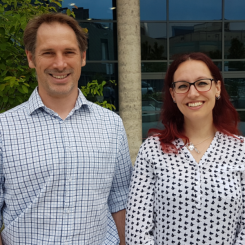Dr Zoe Walters, with Dr William Tapper
University of Southampton
Awarded: £24,820
The challenge
Rhabdomyosarcoma is the most common type of soft tissue sarcoma to occur in childhood, with up to 70 new cases in the UK each year. Most children with tumours at a single site in the body respond well to treatment, with a 5-year survival rate of 70%. However, patients with tumours that have spread throughout the body, or patients with sarcoma in particular parts of the body are less likely to survive. There has been little improvement in survival over the last few decades despite an increase in treatment intensity.
How will this project tackle this challenge?
To improve patient outcomes we need to determine how specific rhabdomyosarcoma cells resist treatment and develop new treatments which target these resistant cells. To achieve this we will first identify the cells which respond differently to treatment, by isolating single rhabdomyosarcoma cells, cloning them and testing how well the cloned cells respond to chemotherapy.
Using new cutting-edge techniques we will characterise gene expression and changes in DNA in the most sensitive and resistant cells. We will identify a list of key genetic differences associated with chemotherapy response by comparing the cells that respond and those that don’t.
What this means for people affected by sarcoma
The key factors the team find which enable cancer cells to escape therapy can then be applied to patient samples to better understand resistance and why sarcomas come back. Furthermore, the clone cells that they will create can be used to test other drugs that may be more effective than standard treatments in eliminating these chemo-resistant cells. Ultimately, this project has the potential to improve overall outcome and quality of life for rhabdomyosarcoma patients.
Rhabdomyosarcoma is the most common type of soft tissue sarcoma to occur in childhood, with up to 70 new cases in the UK each year, but there has been little improvement in survival over the last few decades despite an increase in treatment intensity.













